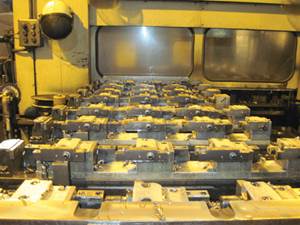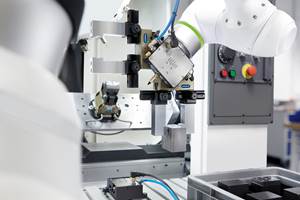Succeeding Beyond A Specialty
This shop watched its chosen niche become less profitable. Its response was a dramatic investment in new equipment, along with an information-related change that has made all of the shop’s equipment more cost-effective.
The most important capability for a turning shop is the ability to turn a profit. Bryon Bettinardi, owner of Bryco Machine in Tinley Park, Illinois, was watching this capability decline.
During the 1990s, the shop had a specialty. Small-diameter parts requiring precision turning, milling and drilling could be produced at high efficiency on the shop’s bar-fed CNC Swiss-type lathes. For much of this time, says Mr. Bettinardi, there were fewer than 100 such machines in the Chicagoland area.
That is not the case anymore. He believes that the number today is about 700. As the capacity has multiplied, the profit margins for this work have gone down. The shop had to change. The problem was, the change had to be big.
It was clear what capabilities to add. Trying to run small-batch prototype jobs on the Swiss-type machines was an ongoing frustration, because the machines are at their best when running large quantities. Then there were the jobs the shop couldn’t take on at all—that is, parts larger than 1.25 inch in diameter, the capacity of the largest Swiss-type in the shop. To provide a larger range of services to existing customers, Bryco needed to add both prototype machining and production machining of larger-diameter parts to its arsenal of capabilities.
However, adding too little prototyping capacity would leave the shop continuing to struggle to do some of its short runs on Swiss-types. Adding too little large-diameter capacity would be even less acceptable, because Bryco could only hope to get its customers’ large-diameter business if it had the capacity to fully satisfy those needs. So Bryco went full bore (so to speak) into increasing its turning capacity.
A shop that formerly had 13 CNC turning machines added seven more in a single year. The shop also added 12,000 square feet. The total investment was $2.5 million, or about two-thirds of the shop’s annual sales. All at once, Bryco became a different and significantly more complex shop. In fact, just the complexity brought its own perils.
Mr. Bettinardi could no longer gage the performance of all of his machines at a glance. Nor could he quote jobs based on his specific understanding of a particular type of turning. He needed better information to manage a bigger shop with broader capabilities. To obtain this information, he made several seemingly small changes that he now considers to have been pivotal: hiring a director of operations and technology, placing PCs on the shop floor, and expanding the shop’s use of shop management software beyond payables and receivables to include shopfloor data collection.
Monitoring and responding to the shopfloor data has proven essential for quoting jobs on the new machines and keeping them producing efficiently, Mr. Bettinardi says.
However, given what he also discovered about costs and quoted prices for the Swiss-type work, it turned out that he could have benefited from having access to this more precise information all along.
Production Turning
For its new capacity in large-diameter production turning, Bryco’s objective was to realize something like the production efficiency of its bar-fed Swiss-types. The shop purchased five bar-fed turning centers from Eurotech (Brooksville, Florida), all served by 6-foot bar feeders from Iemca (Bucci Industries, Charlotte, North Carolina).
The Eurotech machines have dual spindles for simultaneous machining of multiple pieces, along with dual turrets possessing live-tool capability. Bryco’s different models offer 1.77- or 2.625-inch bar capacity and 8- or 10-inch chuck capacity. Two of the machines have Y-axis capability, which Bryco uses for parts requiring engraving.
One design feature of these machines that interested Mr. Bettinardi was the fact that the main spindle and subspindle are not concentric. For the part to be handed off from one spindle to the next, the subspindle travels up to meet the main spindle, then returns with the part to its lower position. The result of this design, he says, is that the turrets have more clearance to accommodate long tools.
Prototype Turning
For the prototype work, the important point for Bryco was that a prototype job’s preparation time can easily exceed its machining time (certainly not the case for the shop’s production jobs). For a prototype machine, cutting fast was desirable, but being able to program fast was even more valuable.
Bryco chose two TM6 CNC lathes from Hurco (Indianapolis, Indiana). One machine uses an Iemca bar feeder and the other is limited to chucking, so even prototype jobs can be sorted according to the machine that is appropriate to the nature of the part. Both machines use Hurco’s own control, which can be programmed either conversationally or through CAM software.
The former option appealed to Bryco. Its Swiss-type work has long been programmed on the shop floor. Shop superintendent Ricky Hamilton has done much of this programming for Bryco, composing programs line by line near the Swiss-type machines. For production part numbers that will run for hours or days and will be ordered again, the shop can easily afford the time required to program this way. However, this is not the case for prototyping jobs, where any small run may be finished quickly, and the shop may never see that part again. Spending minimal time on programming is critical.
The conversational programming serves this need by making it unnecessary for the machinist to think through programs on a line-by-line basis. Prompts and graphics on the CNC screen guide the user through defining the part and assigning operations to it, so the control can compose the NC code in the background. Thanks to this interface, Bryco sees its programming times reduced by hours per part for the jobs that are run on these machines.
In other words, the software makes the hardware more effective. This is a model that has also come to hold true, albeit in a different way, for all of the other machines in the shop.
Improved Information
Mr. Bettinardi recalls an error that the shop once made. Despite instructions on the hard-copy traveler, Bryco shipped a job before a required step (heat treating) had been performed.
The error was a fluke, and Bryco quickly made it right. However, the event illustrated to Mr. Bettinardi the kinds of problems that can occur when there are no systems in place to catch human error. When the shop expanded to a broader mix of machines, he feared these errors would become even more likely. The shop needed a more sophisticated management system to safeguard the process.
Fortunately, the system was already in-house. In the office, Bryco had been using JobBoss (from Exact Software, Minneapolis, Minnesota) for several years. Now it was time to begin using it on the shop floor. Mr. Bettinardi hired director of operations and technology Dennis Gilhooley to (among other things) make this transition. Mr. Gilhooley installed the PCs on the shop floor, and he trained the operators in how to use the software.
The latter task was easy, he says. The operators took to using the software quite naturally. Bryco now asks them to log into the software for five different events—starting a shift, ending a shift, starting a job, finishing a job and printing a move ticket. Each “job” in this context refers to a separate production step (so a given order has multiple jobs). Because each of these events represents a natural moment for an employee to record his or her activity, data entry at the shopfloor PCs became a seamless part of Bryco’s process quickly. The information now provides an effective safeguard against error, allowing the software to confirm that all of the work required for an order has been performed before that order can be released.
The data also provide Mr. Bettinardi with better information for managing his costs. Daily production reports summarize in dollars just how much output each machine is delivering. If any machine is underperforming in this way, then Mr. Bettinardi can see the problem and react quickly, consulting with the shop foreman to find a solution. For example, a particular cut may be taking too long, resulting in low value, and investing in a special tool might be the answer. Problems such as this could never be concretely identified before, but now they are immediately clear.
Past problems are also clear. Mr. Bettinardi still does the shop’s quoting, but now the shopfloor data allow him to look at similar jobs to help him in his estimates. In a few cases, data have shown him how inaccurate certain past quotes have been. He cites four related part numbers in particular—parts that were quoted at cycle times of 1 minute. Current data have shown that it was actually taking the shop nearly 2 minutes to machine each part. The discrepancy would be significant enough if the job was new, but the shop has been running these four part numbers for years! Needless to say, it would have been nice to know much earlier that the process needed to be re-engineered to match the quote (a step that has now been taken).
Mr. Bettinardi draws a valuable lesson from this. Machine tool technology simply is not enough, he says. In order to thrive, a shops needs a system. That is, the shop needs data and organization that are sufficient to allow the shop to deploy its machine tool technology in the most effective way.
“People come first,” he says. “You need the right employees. Next comes the system—this is second in importance. Machine tool technology is crucial, but it’s not at the top of the list.”
Related Content
Using Jaws as Grippers Enables Flexible, Low-Cost Automation
VersaBuilt’s automation systems significantly boosted Innovative Fabrication’s revenue. In return, the shop has helped VersaBuilt optimize its products.
Read MoreMoving To Magnets Doubles Productivity
Moving from hydraulic to magnetic fixtures enabled this shop to reduce setup time, improve rigidity and eliminate manual operations. As a result, productivity doubled.
Read MoreSimple Workholding for Robotic Automation
Robotic automation relies on reliable workholding, and these modular pneumatic jaws make it simple.
Read MoreA Case for Combining Workholding with Optical Scanning
Automotive dies and die inserts are often complex, one-off parts with little room for error. Integrity Tool's investments in modular workholding tools and 3D optical scanning have allowed the company to create niche capabilities for its CNC machined parts.
Read MoreRead Next
The Cut Scene: The Finer Details of Large-Format Machining
Small details and features can have an outsized impact on large parts, such as Barbco’s collapsible utility drill head.
Read More3 Mistakes That Cause CNC Programs to Fail
Despite enhancements to manufacturing technology, there are still issues today that can cause programs to fail. These failures can cause lost time, scrapped parts, damaged machines and even injured operators.
Read More.jpg;maxWidth=970;quality=90)
.jpg;width=70;height=70;mode=crop)





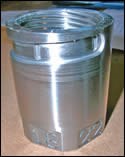
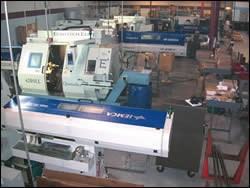
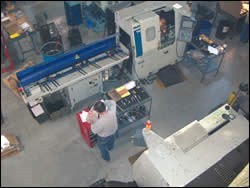




.jpg;maxWidth=300;quality=90)
















